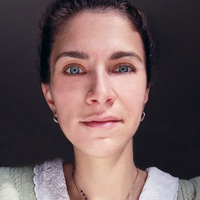MARIA christofi
National Technical University of Athens, Architecture Engineering, Graduate Student
- Maria Christofi is an architect and researcher investigating transdisciplinary models of thinking and practicing architecture. She is a Ph.D. student at the National Technical University of Athens (NTUA), collaborating with professors Kotsopoulos (MIT), Bruni (AAU), and Theocharides (UCY). Maria holds an MSc in ‘Cognitive Architecture’ from the NTUA funde... moreMaria Christofi is an architect and researcher investigating transdisciplinary models of thinking and practicing architecture. She is a Ph.D. student at the National Technical University of Athens (NTUA), collaborating with professors Kotsopoulos (MIT), Bruni (AAU), and Theocharides (UCY). Maria holds an MSc in ‘Cognitive Architecture’ from the NTUA funded by the State Scholarships Foundation and a BSc in Architecture from the University of Cyprus (UCY). Her research explores the intersections between architecture, cognition, and computing. She investigates how our environment's perception adapts to the alterations of the built environment. Her methodology is based on a situated computing practice that investigates spatial-cognitional phenomena across different scales.edit
The sensory stimuli from the urban environment are often distinguished as subtle structures that derive from experiencing the city. The experience of the urban environment is also related to the social relationships and memories that... more
The sensory stimuli from the urban environment are often distinguished as subtle structures that derive from experiencing the city. The experience of the urban environment is also related to the social relationships and memories that complete the 'urban eyescapes' and the way individuals can recall them. Despite the fact that the consideration of urban sensory stimuli is part of urban design, currently the account of visual experience in urban studies is hard to be identified. This article explores ways of recording how the senses mediate one's engagement with the urban environment. This study involves an experiment in the urban environment of the Copenhagen city centre, with 20 subjects performing a walking task. The aim of the experiment is to categorize the visual 'Bold Headlined Stimuli' (BHS) of the examined environment, using eye-tracking techniques. The analysis allows us to identify the Headlining Stimuli Process, (HSP) in the select urban environment. HSP is significantly mediated by body mobility and perceptual memories and has shown how urban stimuli influence the intelligibility and the recalling patterns of the urban characteristics. The results have yielded a 'Bold Headline list' of stimuli related to: the spatial characteristics of higher preference; the stimuli that are relevant to livability; and the spatial dimensions easier to recall. The data of BHS will be used in cross-disciplinary city analysis. In the future, these results could be useful in urban design, to provide information on how urban space affects the human activities.
